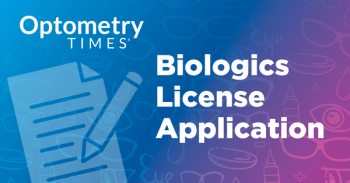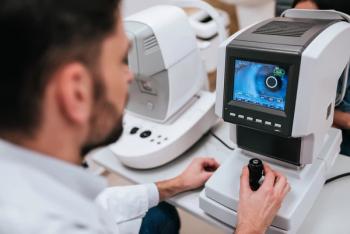
Topical insulin drops: Successful treatment for refractory persistent corneal epithelial defects
The use of topical insulin eye drops led to a successful resolution of PEDs in 9 of 11 cases in the study.
A research team in the United Kingdom reported that topical insulin eye drops resolved refractory persistent epithelial defects (PEDs) in 9 of 11 cases in which they were tested.1 Shafi Balal, MD, was the first study author from Moorfields Eye Hospital and the UCL Institute of Ophthalmology, both in London.
The authors evaluated this treatment approach in a prospective, single-center case series from March 2020 to September 2021. The investigators explained that all patients were prescribed insulin eye drops for refractory PEDs that failed to achieve resolution of their PEDs despite receiving maximal standard medical treatment, including serum eye drops. The insulin eye drops were instilled 4 times/day. The patients were evaluated at 2-week intervals by full slit-lamp examination and serial anterior segment photography. The primary end point was resolution of the epithelial defects.
The study included 11 eyes of 10 patients (mean age, 45.4 years) that were treated with insulin eye drops. The mean follow-up was 195.7 ± 114.3 days after re-epithelization. The most common cause of the PEDs was chemical injury (n = 5, 60%). The mean size of the PED at baseline was 41.3 ± 55.2 mm2.
The authors reported that 9 of the 11 eyes (82%) fully re-epithelized in a mean time of 62.3 ± 34.6 days (range, 14–112). Of the remaining 2 patients, the PED decreased in size from 12.25 mm2 to 4.5 mm2 and 1 did not respond. Among the patients who achieved full re-epithelization, the defects did not recur.
“This study showed that the use of topical insulin eye drops led to a successful resolution of PEDs in 9 of 11 cases. We demonstrate the use of insulin for closure of PEDs in chemical eye injuries. Larger controlled studies are required to further evaluate this novel therapy,” the authors commented.
Reference
1. Balal S, Din N, Ashton C, Ahmad S. Healing of chemical injury–related persistent corneal epithelial defects with topical insulin. Cornea. 2023;42:1000-1004; doi:10.1097/ICO.0000000000003145
Newsletter
Want more insights like this? Subscribe to Optometry Times and get clinical pearls and practice tips delivered straight to your inbox.








































